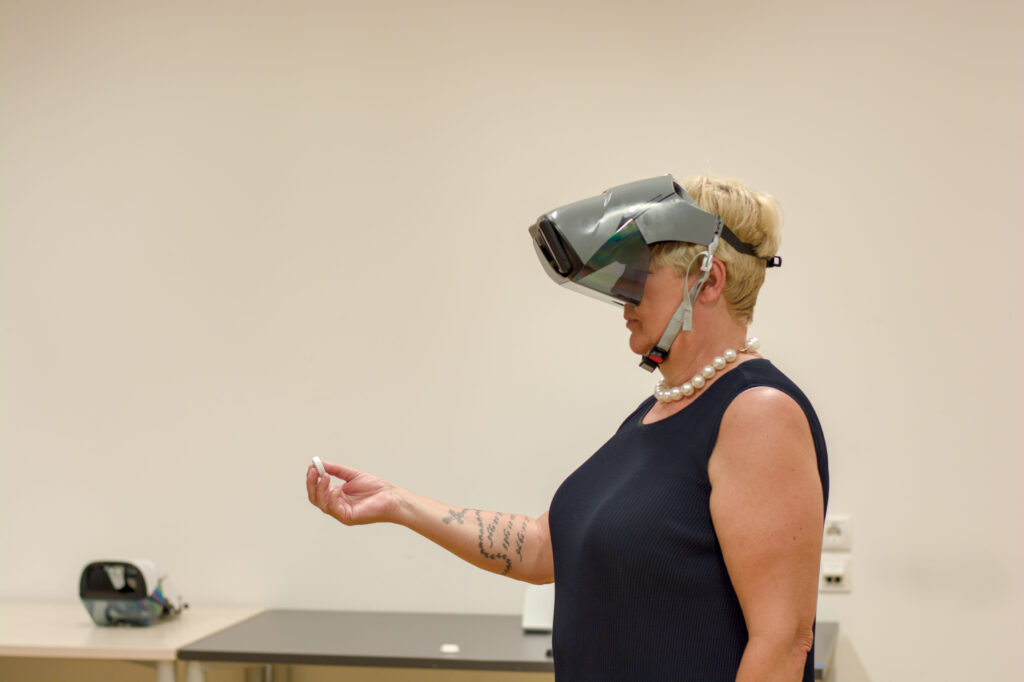Conventional test procedure
The Trail Making Test consists of two parts. In the first part, the numbers from 1 to 25, which appear to be randomly distributed, must be connected as quickly as possible in ascending order. In the second part, numbers and letters must be connected alternately in ascending or alphabetical order. This test is usually carried out with pen and paper or on a computer.
In order to successfully complete this test, several cognitive processes are required, such as visual attention, processing speed, cognitive flexibility and general cognitive ability. The test procedure can be used to investigate various neurological disorders, including dementia.
Adapted test procedure
In the digitalised Trail Making Test, balls labelled with numbers and letters have to be selected in the correct order. The application runs as an augmented reality (AR) application on a smartphone. The smartphone is pushed into a head mount so that the test subjects can perceive the balls three-dimensionally in real space. To select balls, the test subjects move a crosshair by turning and tilting their head over the ball to be selected. If the two overlap, a button must be pressed with the hand.
